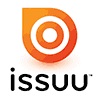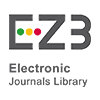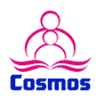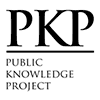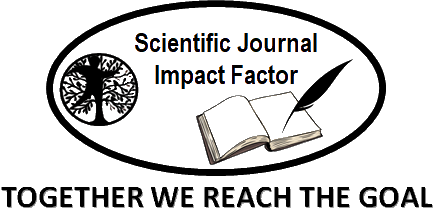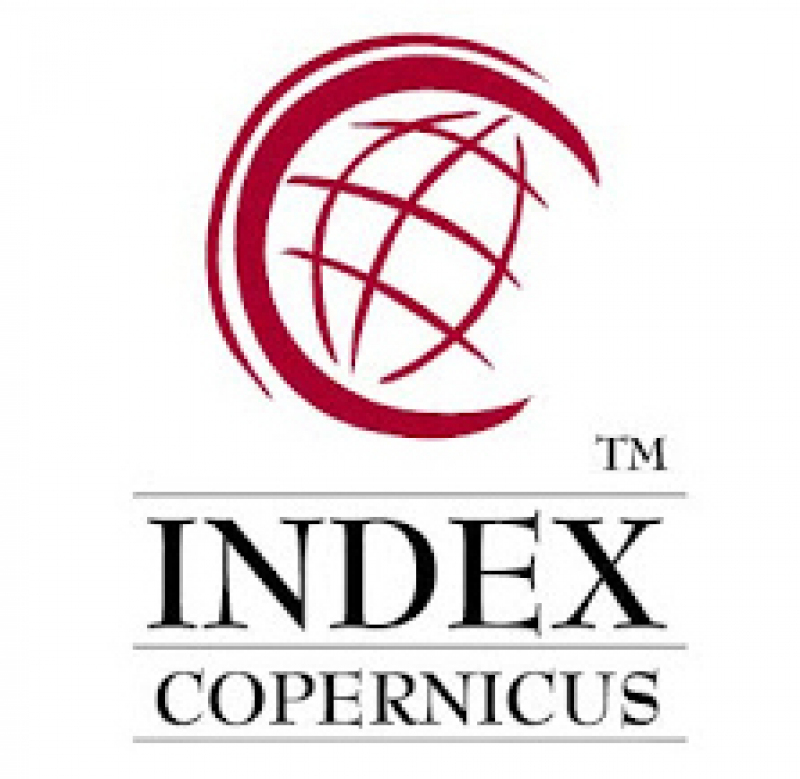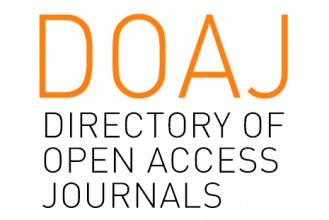Form and Aesthetic Perspective Dadak Merak in Art of Reog Ponorogo
Abstract
A culture that spans the arts, which is an identity for the region, accommodates how the existence of the arts can continue to work in accordance with its flow. The form of cultural heritage that is so embedded in its instincts and veins provides its own strengthening for its lovers. The turmoil of the soul in how to build a mindset to make it an assembled perspective on art. Cultural exotica that can be enjoyed by the five senses gives pleasure to art lovers who look at it. Reog is a marvelous art for all Indonesian people. The main symbol in this case is realized in the form of a work of art called the peacock. An aesthetic of this peacock has its own perspective in the process of development. The manufacturing process requires materials used such as tiger skin and peacock feathers. The aesthetic value given anesthetizes many artists in following the development of reog art. The high spirit of the community in maintaining all forms of beauty or aesthetic value in reog performances makes them have a sense of pride and always strive for the best for the development of traditional arts. The problem limitations presented by the researcher 1) How is the perspective of the shape of the dadak merak in reog art? 2) How is the aesthetic meaning of the shape of the peacock in reog art? In this study using descriptive qualitative methods where all data generated from the flow of thinking researchers are equipped with references as a reference in this research activity.
Keywords
Full Text:
PDFReferences
Achmadi, Asmoro. 2016. “Aksiologi Reog Ponorogo Relevansinya Dengan Pembangunan Karakter Bangsa.” Jurnal THEOLOGIA, 25(1): 3–28.
Agus Dono Karmadi. 1991. “A Heritage Handbook.”: 1–6.
Ambarwangi, Sri. 2014. “Reog As Means of Students’ Appreciation and Creation in Arts and Culture Based on the Local Wisdom.” Harmonia: Journal of Arts Research and Education, 14(1): 37–45.
Andini Idhad et al. 2022. “Sejarah Dan Filosofi Reog Ponorogo Versi Bantarangin.” Jurnal Review Pendidikan dan Pengajaran, 5(1): 72–79. Diunduh dari http://journal.universitaspahlawan.ac.id/index.php/jrpp.
Bekti, Bekti Galih Kurniawan. 2022. “Tradisi Reog Ponorogo Sebagai Budaya Penguat Jati Diri Bangsa.” Jurnal Budaya Nusantara, 5(2): 75–82.
Devinta, Ninda Evrilia, and Yohan Susilo. 2023. “Makna Simbolis Dhadhak Merak Dalam Reog Ponorogo Versi Suryangalam.” Padma Jurnal Seni dan Budaya, 1(1): 1–18.
Freedman, Kerry. 2000. “Social Perspectives on Art Education in the U. S.: Teaching Visual Culture in a Democracy.” Studies in Art Education, 41(4): 314.
Harsono, Jusuf, Slamet Santoso, and Yusuf Adam Hilman. 2017. “MITOLOGI SENI REYOG PONOROGO VS KAMPANYE PERLINDUNGAN SATWA ANIMAL WALFARE MELALUI PRAKTIK REKAYASA SOSIAL.” WASKITA: Jurnal Pendidikan Nilai dan Pembangunan Karakter, 4(2): 33–47. Diunduh dari https://waskita.ub.ac.id/index.php/waskita/article/view/111.
Herawati, Andi. 2015. “Keindahan Sebagai Elemen Spiritual Perspektif Islam Tradisional.” Jurnal Kawistara, 5(2).
Hermawan, T. 2011. “Kesenimanan Ledjar Subroto Dalam Perspektif Bourdieu.” Deiksis,: 166–85. Diunduh dari https://journal.lppmunindra.ac.id/index.php/Deiksis/article/view/ 428%0Ahttps://journal.lppmunindra.ac.id/index.php/Deiksis/article/download/428/726.
Indriyani, Putri Dyah, Dedy Ari Nugroho, and Nur Hikmah Sherlu. 2023. “Study of Functionalism in the Art of Reog Singo Budoyo.” Cendikia: Media Jurnal Ilmiah Pendidikan, 13(2): 508–14.
Kariarta, I Wayan, Stah Negeri, and M P U Kuturan. “Jñānasiddhânta Jñānasiddhânta. Diunduh dari ”https://scholar.google.co.id/citations?view_op=view_citation&hl=id&user=vbDg-_0AAAAJ&citation_for_view=vbDg-_0AAAAJ:u-x6o8ySG0sC.
Kristianto, Imam. 2019. “Kesenian Reyog Ponorogo Dalam Teori Fungsionalisme.” Tamumatra: Jurnal Seni Pertunjukan, 1(2): 69–82.
Mustikasari, Mega, Arlin Arlin, and Syamsu A Kamaruddin. 2023. “Pemikiran Pierre Bourdieu Dalam Memahami Realitas Sosial.” Kaganga:Jurnal Pendidikan Sejarah dan Riset Sosial Humaniora, 6(1): 9–14.
Rangga et al. “NILAI-NILAI SENI PADA MASYARAKAT MULTI-INTERDISIPLIN PENGETAHUAN SEBAGAI HABITUS BUDAYA INTELEKTUAL SENI MASA KINI ”.”
Riess, Jonathan. 1988. “ : The Psychology of Perspective and Renaissance Art .” The Sixteenth Century Journal, 19(2): 259–60.
Santoso, Vedy. 2016. “Akulturasi Estetika Sebagai Modal Untuk.” Invensi, 1(1): 70–79.
Saputra, Tomihendra. 2020. “Seni Dalam Kebudayaan.” (September): 205.
Sarjono, Haryadi, Ria Trianti, and Heppy Yohanes. 2021. “Systematic Literature Review the Role of E-Commerce in Reog Ponorogo Art Crafters.” IEOM Society International: 3086–93.
Tasrif, Muh. 2018. “Dimensi Spiritual Kebudayaan Di Tengah Relasi Yang Timpang Antara Utara Dan Selatan.” El-HARAKAH, 10(2): 107.
Abiodun, F. (2019). Singing between What Culture (DIS) Allows: The Expression of Emotion by Muslim Women Singers in Nigeria. The International Journal of Humanities & Social Studies, 7(2). https://doi.org/10.24940/theijhss/2019/v7/i2/hs1902-024.
Afi, K. E. Y. M., & Banamtuan, M. F. (2020). Kajian Sosio-Historis Tentang Pandangan Dunia Atoni Pah Meto dalam Ritus Poitan Liana. Paradigma: Jurnal Kajian Budaya, 10(1), 49. https://doi.org/10.17510/paradigma.v10i1.335.
Ahmad, M. S., & Abu Talib, N. Bt. (2015). Empowering local communities: decentralization, empowerment and community driven development. Quality & Quantity, 49(2), 827–838. https://doi.org/10.1007/s11135-014-0025-8.
Alemu, A. (2018). The Role of Women"s in Indigenous Conflict Resolution: The Case of Dokko Community in Gamo Zone, SNNPR, Ethiopia. International Journal of Science and Research. https://doi.org/10.21275/SR20918184918.
Asfina, R., & Ovilia, R. (2017). Be Proud of Indonesian Cultural Heritage Richness and Be Alert Of Its Preservation Efforts In The Global World. Humanus, 15 (2), 195.https://doi.org/10.24036/jh.v15i2.6428.
Avrilla, N. R., Kurniawan, A. G., Tribrata, B. N., Ivanna, R. V., Aisyah, S. N., & Parhan, M. (2023). Sinergitas Sekolah Dan Keluarga: Optimalisasi Pembinaan Akhlak Mulia Siswa SMA. Jurnal Wanita Dan Keluarga, 4(2), 187–200. https://doi.org/10.22146/jwk.8420.
Bhatta Joshi, Y. (2023). Women Empowerment Reinvented: Recognizing the Role of Religiosity in Gender Equality. Ganeshman Darpan, 8(1), 134–140. https://doi.org/10.3126/gd.v8i1.57340.
Bussolo, M., Ezebuihe, J. A., Muñoz Boudet, A. M., Poupakis, S., Rahman, T., & Sarma, N. (2024). Social Norms and Gender Disparities with a Focus on Female Labor Force Participation in South Asia. World Bank Research Observer, 39(1), 124–158. https://doi.org/10.1093/wbro/lkad010.
Caldwell, C., & Leighton, L. (2016). Dance/Movement Therapy, Women’s Rights, and Feminism: The First 50 Years. American Journal of Dance Therapy, 38(2), 279–284. https://doi.org/10.1007/s10465- 016-9230-4.
D’Agostino, M. E. (2020). Reclaiming and Preserving Traditional Music: Aesthetics, ethics and technology. Organised Sound, 25(1), 106–115. https://doi.org/10.1017/S1355771819000505.
Della Porta, D., Diani, M., & Eyerman, R. (2015). The Art of Social Movement. In The Oxford Handbook of Social Movements. Oxford University Press. https://doi.org/10.1093/oxfordhb/9780199678402.013.47.
Devriezen Amasanan, Y., & Sumaryanto Florentinus, T. (2019). Catharsis: Journal of Arts Education the Compotition and Functionof Heo Musical Instrument At"Feotnai Insana Studio" Regency of North Central Timor, East Nusa Tenggara Province. In Catharsis (Vol. 8, Issue 3). http://journal.unnes.ac.id/sju/index.php/catharsis.
Fairclough, N. (1995.). Critical discourse analysis: The critical study of language.
Fakin Bajec, J. (2016). Cultural Heritage and the Role of Voluntary Associations in the Process of Achieving Sustainable Development in Rural Communities. Studia Ethnologica Croatica, 28, 21–45. https://doi.org/10.17234/SEC.28.2.
Fallo, F. (2018). A Inculturação do Cristianismo no Contexto de Atoni Pah Meto-Timor. Tesis.
Universidade Católica Portuguesa.
Florentinus, T. S., Cahyono, A., & Tiwery, K. (2022). Enculturation of Totobuang Music in Supporting Cultural Art Conservation in Ambon City. https://doi.org/10.2991/assehr.k.211125.043.
Abdulmajid, A. (2021). Discourse: Theory and Practice. In Extremism in the Digital Era (pp. 97–130).
Springer International Publishing. https://doi.org/10.1007/978-3-030-74833-3_5.
Abiodun, F. (2019). Singing between What Culture (DIS) Allows: The Expression of Emotion by Muslim Women Singers in Nigeria. The International Journal of Humanities & Social Studies, 7(2). https://doi.org/10.24940/theijhss/2019/v7/i2/hs1902-024.
Afi, K. E. Y. M., & Banamtuan, M. F. (2020). Kajian Sosio-Historis Tentang Pandangan Dunia Atoni Pah Meto dalam Ritus Poitan Liana. Paradigma: Jurnal Kajian Budaya, 10(1), 49. https://doi.org/10.17510/paradigma.v10i1.335.
Ahmad, M. S., & Abu Talib, N. Bt. (2015). Empowering local communities: decentralization, empowerment and community driven development. Quality & Quantity, 49(2), 827–838. https://doi.org/10.1007/s11135-014-0025-8.
Alemu, A. (2018). The Role of Women"s in Indigenous Conflict Resolution: The Case of Dokko Community in Gamo Zone, SNNPR, Ethiopia. International Journal of Science and Research. https://doi.org/10.21275/SR20918184918.
Asfina, R., & Ovilia, R. (2017). Be Proud of Indonesian Cultural Heritage Richness And Be Alert Of Its Preservation Efforts In The Global World. Humanus, 15(2), 195. https://doi.org/10.24036/jh.v15i2.6428.
Avrilla, N. R., Kurniawan, A. G., Tribrata, B. N., Ivanna, R. V., Aisyah, S. N., & Parhan, M. (2023). Sinergitas Sekolah Dan Keluarga: Optimalisasi Pembinaan Akhlak Mulia Siswa SMA. Jurnal Wanita Dan Keluarga, 4(2), 187–200. https://doi.org/10.22146/jwk.8420.
Bhatta Joshi, Y. (2023). Women Empowerment Reinvented: Recognizing the Role of Religiosity in Gender Equality. Ganeshman Darpan, 8(1), 134–140. https://doi.org/10.3126/gd.v8i1.57340.
Bussolo, M., Ezebuihe, J. A., Muñoz Boudet, A. M., Poupakis, S., Rahman, T., & Sarma, N. (2024). Social Norms and Gender Disparities with a Focus on Female Labor Force Participation in South Asia. World Bank Research Observer, 39(1), 124–158. https://doi.org/10.1093/wbro/lkad010.
Caldwell, C., & Leighton, L. (2016). Dance/Movement Therapy, Women’s Rights, and Feminism: The First 50 Years. American Journal of Dance Therapy, 38(2), 279–284. https://doi.org/10.1007/s10465- 016-9230-4.
D’Agostino, M. E. (2020). Reclaiming and Preserving Traditional Music: Aesthetics, ethics and technology. Organised Sound, 25(1), 106–115. https://doi.org/10.1017/S1355771819000505.
Della Porta, D., Diani, M., & Eyerman, R. (2015). The Art of Social Movement. In The Oxford Handbook of Social Movements. Oxford University Press. https://doi.org/10.1093/oxfordhb/9780199678402.013.47.
Devriezen Amasanan, Y., & Sumaryanto Florentinus, T. (2019). Catharsis: Journal of Arts Education The Compotition and Functionof Heo Musical Instrument At"Feotnai Insana Studio" Regency of North Central Timor, East Nusa Tenggara Province. In Catharsis (Vol. 8, Issue 3). http://journal.unnes.ac.id/sju/index.php/catharsis.
Fairclough, N. (1995.). Critical discourse analysis: The critical study of language.
Fakin Bajec, J. (2016). Cultural Heritage and the Role of Voluntary Associations in the Process of Achieving Sustainable Development in Rural Communities. Studia Ethnologica Croatica, 28, 21–45. https://doi.org/10.17234/SEC.28.2.
Fallo, F. (2018). A Inculturação do Cristianismo no Contexto de Atoni Pah Meto-Timor. Tesis.
Universidade Católica Portuguesa.
Florentinus, T. S., Cahyono, A., & Tiwery, K. (2022). Enculturation of Totobuang Music in Supporting Cultural Art Conservation in Ambon City. https://doi.org/10.2991/assehr.k.211125.043.
Giurchescu, A. (2001). The Power of Dance and Its Social and Political Uses. Yearbook for Traditional Music, 33, 109. https://doi.org/10.2307/1519635.
Good, A., Sims, L., Clarke, K., & Russo, F. A. (2021). Indigenous Youth Reconnect with Cultural Identity: The evaluation of a community‐ and School‐Based Traditional Music Program. Journal of Community Psychology, 49(2), 588–604. https://doi.org/10.1002/jcop.22481.
Grant, C. (2012). Rethinking Safeguarding: Objections and Responses to Protecting and Promoting Endangered Musical Heritage. Ethnomusicology Forum, 21(1), 31–51. https://doi.org/10.1080/17411912.2012.641733.
Innis, R. E. (2012). Meaningful Connections: Semiotics, Cultural Psychology, and the Forms of Sense.Oxford University Press. https://doi.org/10.1093/oxfordhb/9780195396430.013.0013.
Jacob, F. D. Ch. A. (2021). Lunat: Tato Tradisional Masyarakat Dawan di Timor Barat. Anthropos: Jurnal Antropologi Sosial Dan Budaya (Journal of Social and Cultural Anthropology), 7(1), 54. https://doi.org/10.24114/antro.v7i1.24530.
Jambunanda, A. J., Ismayati, I., Aisah, S., Kurniasih, N., & Selfianah. (2022). Tradisi Kesenian Kendangan di Kampung Citutung Upaya untuk Menjaga Kelestarian Budaya. Lembaran Masyarakat: Jurnal Pengembangan Masyarakat Islam, 8(2), 219–238. https://doi.org/10.32678/lbrmasy.v8i2.7848.
Karmela, S. H., & Yanto, F. (2021). Pengenalan Seni Musik Tradisional Melayu Jambi Kompangan dan Hadrah untuk Menumbuhkan Kepedulian Budaya Lokal. Transformasi : Jurnal Pengabdian pada Masyarakat, 1(2), 66. https://doi.org/10.31764/transformasi.v1i2.5466.
Kunnuji, J. (2023). Gangbe in Badagry, Nigeria: Ogu Women’s Performance Practice, Social Status, and Creative Agency. Yearbook for Traditional Music, 55(2), 171–191. https://doi.org/10.1017/ytm.2023.17.
Lauffenburger, S. K. (2020). ‘Something More’: The Unique Features of Dance Movement Therapy/Psychotherapy. American Journal of Dance Therapy, 42(1), 16–32. https://doi.org/10.1007/s10465-020-09321-y.
Li, M., Olsen, K., Davidson, J., & Thompson, W. (2023). Rich Intercultural Music Engagement Enhances Cultural Understanding: The Impact of Learning a Musical Instrument Outside of One’s Lived Experience. International Journal of Environmental Research and Public Health, 20(3), 1919. https://doi.org/10.3390/ijerph20031919.
Lin, Y. (2020). Research on the Development Strategy of Guangfu Traditional Music Culture Based on Big Data. 2020 2nd International Conference on Machine Learning, Big Data and Business Intelligence (MLBDBI), 278–282. https://doi.org/10.1109/MLBDBI51377.2020.00059.
Nicolas, A. (2019). Traditional Music and Contemporary Trends: Music In Asean Communities. Sorai: Jurnal Pengkajian Dan Penciptaan Musik, 12(1), 54–56. https://doi.org/10.33153/sorai.v12i1.2623.
Nii Laryeafio, M., & Ogbewe, O. C. (2023). Ethical Consideration Dilemma: Systematic Review of Ethics in Qualitative Data Collection Through Interviews. Journal of Ethics in Entrepreneurship and Technology, 3(2), 94–110. https://doi.org/10.1108/JEET-09-2022-0014.
Patil, M., Patil, V., & Katre, U. (2024). Unspoken Science: Exploring the Significance of Body Language in Science and Academia. European Heart Journal, 45(4), 250–252. https://doi.org/10.1093/eurheartj/ehad598.
Qiao, Z. (2023). Research on the Application of Ethnic Music Promotion in Primary School Music Education under the Threshold of Core Literacy. Lecture Notes in Education Psychology and Public Media, 2(1), 528–535. https://doi.org/10.54254/2753-7048/2/2022372.
Rahmawati, E., & Putranta, H. (2020). The Exploration of Local Wisdom Values of Performing Arts: An Art of Kuda Lumping Sarimpi. Humanities & Social Sciences Reviews, 8(5), 307–318. https://doi.org/10.18510/hssr.2020.8528.
Rehfeldt, R. A., Tyndall, I., & Belisle, J. (2021). Music as a Cultural Inheritance System: A Contextual- Behavioral Model of Symbolism, Meaning, and the Value of Music. Behavior and Social Issues, 30(1), 749–773. https://doi.org/10.1007/s42822-021-00084-w.
Rumahlatu, B. (2019). Mata Ina: Upaya Pemberdayaan Komunitas Perempuan Leihari di Ambon Perspektif Pendampingan dan Konseling Feminis. INSIGHT: Jurnal Bimbingan Konseling, 8(2), 126–135. https://doi.org/10.21009/INSIGHT.082.02.
Sendratasik, J., Bahasa, F., Seni, D., Semarang, U. N., Renaldus, A., & Elu, A. (2018). Bentuk dan Makna Gong Timor dalam Upacara Ritual Tfua Ton di Napan Sunarto.
Sergeant, D. C., & Himonides, E. (2014). Gender and the performance of music. Frontiers in Psychology, 5. https://doi.org/10.3389/fpsyg.2014.00276.
Setiyani, W., & Tasrif, N. (2023). Cultural Interpretation: The Meaning of Metu Telu Wedding in the Local Tradition of Tanjung Community in North Lombok Regency. Inferensi: Jurnal Penelitian Sosial Keagamaan, 17(1), 87–106. https://doi.org/10.18326/infsl3.v17i1.87-106.
Siregar, I., Nurhaini, P., Husaini, H. Al, & Efendi, M. F. (2023). Dinamika Kebudayaan Masyarakat Kampung Naga dalam Menghadapi Ancaman Kultural Budaya Luar di Desa Neglasari. Jurnal Ilmiah Ilmu Sosial, 9(2), 181–192. https://doi.org/10.23887/jiis.v9i2.70245.
Sisco King, C. (2016). Critical Cultural Approaches to Gender and Sex. In Oxford Research Encyclopedia of Communication. Oxford University Press. https://doi.org/10.1093/acrefore/9780190228613.013.74.
van Breen, J. A., Spears, R., Kuppens, T., & de Lemus, S. (2017). A multiple identity approach to gender: Identification with women, identification with feminists, and their interaction. Frontiers in Psychology, 8(JUN). https://doi.org/10.3389/fpsyg.2017.01019.
Welch, G. F., Biasutti, M., MacRitchie, J., McPherson, G. E., & Himonides, E. (2020). Editorial: The Impact of Music on Human Development and Well-Being. In Frontiers in Psychology (Vol. 11). Frontiers Media S.A. https://doi.org/10.3389/fpsyg.2020.01246.
Yulita, B. I., Susetyo, B., & Sejati, I. R. H. (2021). Exploration of Lampung Traditional Music in Efforts to Preserve Culture by Kulit Tipis Community in Bandar Lampung. Jurnal Seni Musik, 10(1), 47–56. https://doi.org/10.15294/jsm.v10i1.46898.
DOI: http://dx.doi.org/10.18415/ijmmu.v12i6.6762
Refbacks
- There are currently no refbacks.
Copyright (c) 2025 International Journal of Multicultural and Multireligious Understanding

This work is licensed under a Creative Commons Attribution-NonCommercial-NoDerivatives 4.0 International License.
https://ijmmu.com
editor@ijmmu.com
facebook.com/ijmmu
Copyright © 2014-2018 IJMMU. All rights reserved.













